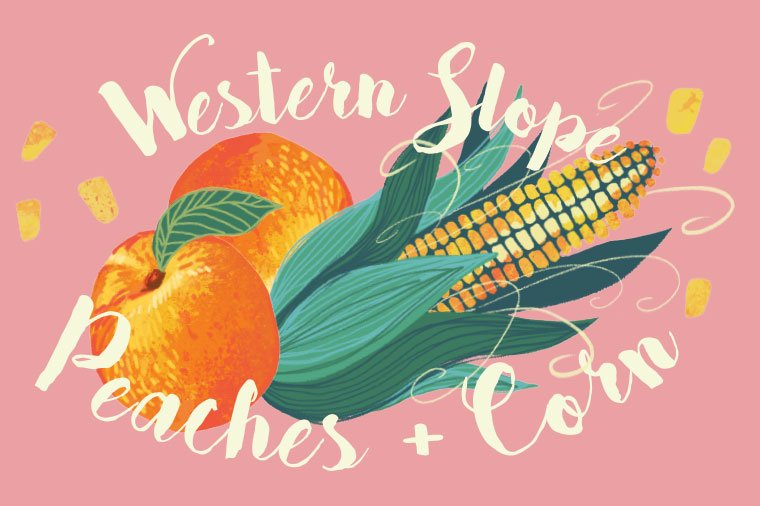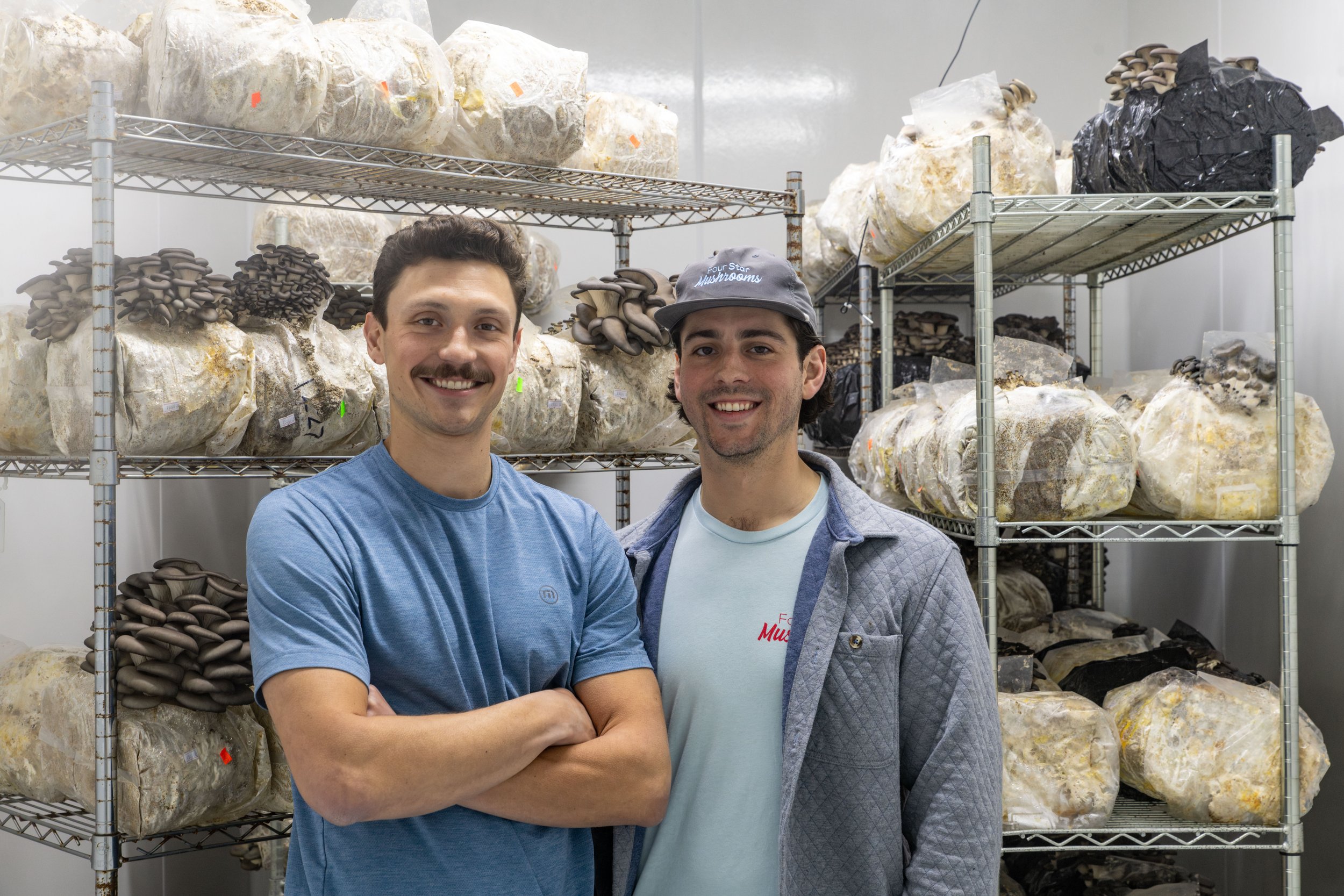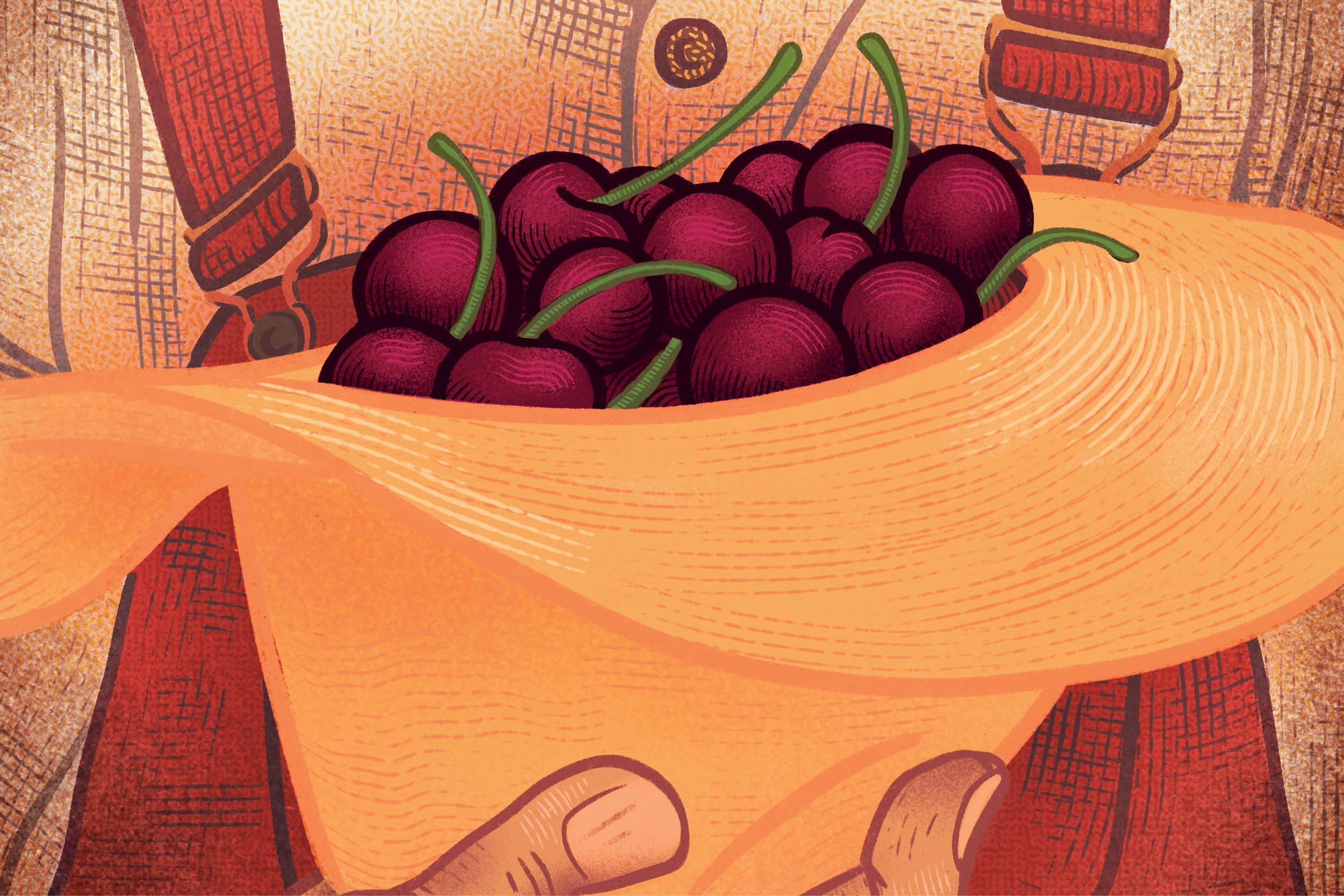Colorado's Other Crops
Come July, Colorado chefs are cooking with solid gold as Western Slope corn and peaches make it onto their menus.
Illustration: Becki Kozel
There’s one Colorado crop that’s hogging nearly all the state’s agricultural attention, but long before marijuana was outlawed, let alone legalized, farmers on Colorado’s Western Slope have been growing prize-winning peaches and corn (and cherries, plums, melons, pears, and apricots).
The earliest fruit orchards were planted in 1881, and by 1904, McElmo Country peaches took first prize in the St. Louis World’s Fair. These days, the state produces 22.4 million pounds of peaches, including the beloved Palisade variety.
It turns out that Western Slope growers have a few geographic and climatic advantages, according to Dr. Ioannis S. Minas, assistant professor of pomology at Colorado State University. “Colorado peaches are famous because of the high levels of soluble sugars and full red blush color development. Stress conditions from the high altitude, such as hot days followed by cool nights during the growing season, are among the major factors that result in the accumulation of high levels of soluble sugars,” says Minas.
As opposed to eating a Georgia peach in the middle of the country, Western Slope farmers typically pick peaches at the tree-ripe stage with most of the fruit destined for nearby markets. High altitude also boosts ultraviolet intensity, and when coupled with 300 days of sun a year, farmers get accelerated growth and ripening.
Geography also plays a part in sweeter-than-life Western Slope Corn, with the most coveted ears coming from the town of Olathe. “We have beautiful corn all over the state, but the temperature variations in Olathe result in corn that is almost too sweet at its peak,” says Max Mackissock, Rising Star Chef of Bar Dough in Denver. Olathe (population 1,810) has an annual festival and national distribution, but its kernels are arguably best enjoyed in late summer in Colorado, when the state’s chefs are cooking with sweet, solid gold.







